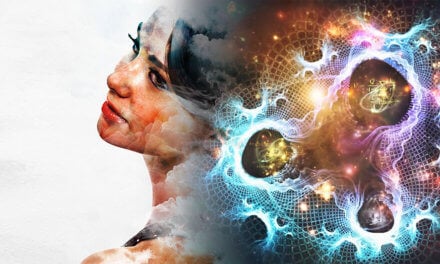
The Wondrous Life and Non-Dual Teachings of Adi Shankara

Shri Adi Shankaracharya profoundly transformed the country of India and its people, bringing the ultimate teachings of Non-Duality back to light, restoring truth, love, compassion and virtue to all human beings.
The quintessential teachings of Advaita or non-duality can be summarized in the following philosophy of Shri Shankaracharya:
“The Absolute Spirit is reality, the world of appearance is illusory; the so-called individual soul is the Absolute itself, and no other.”
Within a very short lifespan of only 32 yrs., much like Jesus, Shri Adi Shankaracharya promoted spiritual harmony by uniting all people on the basic principle of unity – which is Advaita, or the teachings that “Reality is One.”
Shankara’s Early Days
Shri Adi Sankaracharya was born to the Nambudiri couple, Shivaguru and Aryamba, in a little village called Kaladi in Kerala.
Highly virtuous and devoted, the couple had remained childless for a long time, and decided to pray to Lord Shiva for a child at a nearby temple and engage in ‘bhajanam’- practicing service and worship for a number of days on end.
It is said that Lord Shiva was pleased with their devotion and dedication and appeared to the couple in a dream. Lord Shiva then tested the couple and inquired as to whether they wished to have several dull-witted sons who would live long lives or a single brilliant, but short-lived son. The couple asked Lord Shiva to make the decision Himself, and Lord Shiva said that He would be born as their son.
When the child was born the astrologers declared that He was perfect in every respect, and on the 11th day He was named “Shankara.” Shankara at an early age demonstrated a generous heart and a brilliant intelligence.
When Shankara was the age of five, He was sent to a ‘Gurukul” for Vedic studies. There He mastered the Vedic texts and shastras in a very short time and completed His education by the age of eight. Upon returning to His mother’s home, a group of sages came to visit the boy and marveled at His divine presence. Knowing Shankara was pre-destined only to live until 8-years-old, the sages then granted the boy another eight years of life.
At the tender age of eight., Shankara requested from His mother to allow Him to take leave from his home in order to seek out His Guru and destiny, to which she reluctantly granted. A long journey there afterwards, Shankara found His Guru, Govinda Bhagavatpada, in a cave at the banks of the holy river Narmada.
Shri Govinda Bhagavatpada identified Shankara as the great Lord Shiva, initiated Him, and instructed Him on the teachings of Advaita Vedanta or non-duality.
His Life Work & Legacy
Shankara was then instructed to go North to Kashi (modern day Varanasi) and then to the Himalayas, where He was blessed by Sage Vyasa and granted another extension to His lifespan to 32 yrs of age.
Shri Adi Shankaracharya then spread the teachings of Vedanta throughout India and expressed that all practices and religions lead to the same truth of oneness. He emphasized the practice of ahimsa or non-violence, as imparted by the Buddha, and in fact regarded the Buddha as an avatara of Vishnu. Shri Adi Shankaracharya also set the karmic or ritualistic aspects of worship in proper place and stressed that the intensity and sincerity of devotion was more important than the name, form and external practices of devotion.
In His short lifespan, Shri Adi Shankaracharya wrote 18 bhashyas (commentaries) on works such as the Brahma Sutra and Bhagavad Gita, as well as 34 granthas (sacred texts) such as Viveka Chudamani, and Atma Bodha, and 61 strotas (hymns) such as Dakshinamurti Ashtaka and Soundarya Lahari.
He founded monastic orders and institutions in the four corners or directions of India in order to preserve the teachings of Vedanta. In these centers of higher learning (called matha) a lineage of yogis have preserved His teachings and message to this day. This unbroken succession of teachings forms the foundation of morals, meditation practices and non-dual wisdom that the heritage of ancient India and the Vedic culture stand on.
Shankara is considered to be a Mahatma (great soul) of unparalleled wisdom and studying his life and teachings is highly rewarding and beneficial to all students seeking the Truth.
One of our most preferred resources is Ramana Maharshi’s free-flowing interpretation of Shankara’s Vivekachudamani which can be found starting on page 208 of this PDF.




























